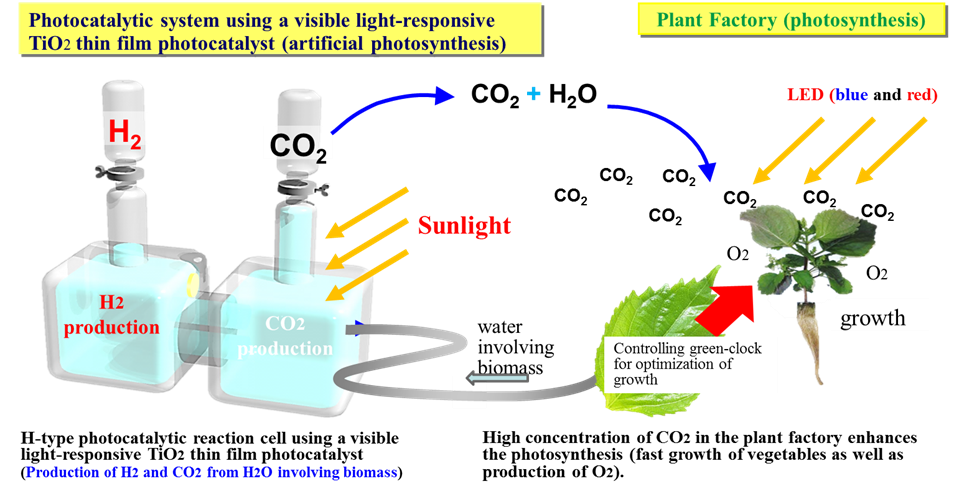

报告题目:Combination of photocatalysis with photosynthesis for the efficient H2 production from water involving biomasses and stable production of safe & reliable vegetables in the artificial light-type plant factory under effective utilization of sunlight
报告时间:2020年12月18日(星期五)上午10:00-11:00
报告地点:腾讯会议
会议ID: 685 085 645
报 告 人:Masakazu Ampo教授(红宝石hbs0022平台&日本大阪府立大学)
报告摘要:
As I mentioned in my last webinar lectures, environmentally harmonious, clean and safe scientific technologies to address energy needs as well as pollution and climatic change are the subject of much recent research. The development of photocatalytic processes will advance sustainable, non-hazardous and economic technologies. In fact, we have successfully developed photocatalysts which enable the absorption of visible light to induce efficient photocatalytic reactions under sunlight irradiation, being published many papers about the efficient H2 production from pure water and water involving organic compounds as sacrificial agents.1,2) However, we need more innovative breakthrough to realize an effective and efficient solar H2 production from pure water. I think the combination of photocatalytic reaction system with other useful system plays an important role in the transition away to realize the solar H2 production from purer water.
This lecture will focus on the combination of photocatalytic reaction to produce H2 efficiently from water involving biomasses with an artificial light-type plant factory to produce efficiently safe & reliable vegetables as the most promising combination since not only the prodction of clean H2 but also stable and safe production of foods is most important and urgent issue. The research into the development of an artificial-light type plant factory to cultivate various vegetables under the conditions with LED lights in completely closed cleanrooms under high concentrations of CO2 which is supplied from the photocatlytic reasction, in which vegetables are efficiently grown within a shorter production time than in outdoor fields, will also be introduced. The plant factory is a new concept in agriculture to supply safe & reliable, nutritious produce year-round regardless of any adverse or disruptive natural or manmade influences such as global warming, climate change, pollution or other potentially damaging circumstances.3,4)

X. Wang, M. Anpo, X. Fu, “Current Developments in Photocatalysis and Photocatalytic Materials”, Elsevier, (2020), and references therein.
J. Schneider, M. Anpo, D. Bahnemann, et al., Chem. Rev., 114, 9919 (2014), and references therein.
M. Anpo, H. Fukuda, T. Wada, Edited; “Plant Factory Using Artificial Light”, (Elsevier) (2018).
M. Anpo, H. Fukuda, T. Wada, Edited; “An Overview of the Plant Factory –production improvement, cost efficiency technology and business opportunities-“ (CMC Publishes) (2015).

报告人简介:
Masakazu Ampo(安保正一)教授是国际著名的光催化学者,被誉为固体表面光化学研究的先驱者。曾担任国际催化理事会理事,也是亚太催化学会的创始人之一,为催化科学和技术的发展做出了重要贡献。2008年成为首个亚洲籍欧洲科学院院士,2011年入选日本科学委员会委员。曾任日本大阪府立大学常务副校长,现担任日本大阪府立大学名誉教授、红宝石hbs0022平台特别荣誉教授、能源与环境光催化创新引智基地海外学术大师。先后出版115本书籍、发表541篇原创论文,累计引用超过3万次。